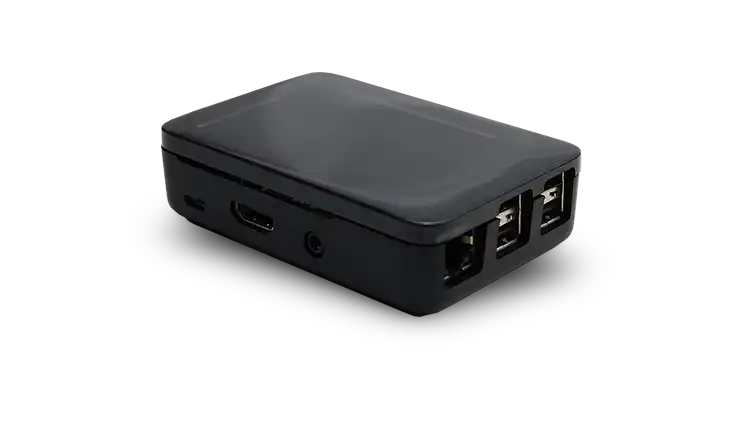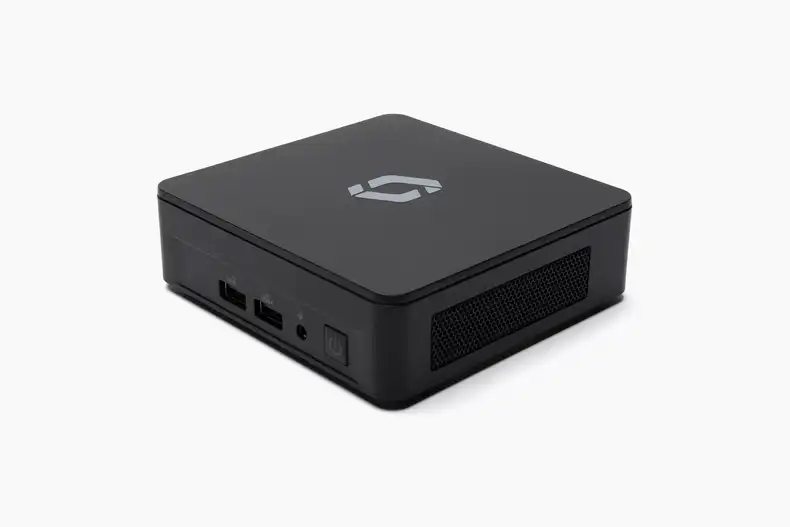“The bigger, the better,” is a common sentiment among consumers. Often, their thinking is that they will have more capabilities and fewer compromises when they purchase a bigger product. While this feeling may be correct for some products, it is certainly incorrect with others. One such product where bigger is not necessarily better is a digital signage player.
A digital signage player is a physical device that renders content to your digital sign, much like a DVD player renders a movie to your home TV. When selecting a digital signage player for your business or organization, it is essential that you first sit down with your team and detail your digital signage plans. If you are planning a 36 screen video wall in Times Square, you will definitely need some serious processing power. However, if you are just trying to power a single screen for a retail store digital sign, a smaller, simpler, and more cost-effective digital signage player will meet your needs.
In this article, we list three reasons why bigger is not necessarily better when it comes to a digital signage player. Additionally, we detail why the Raspberry Pi, a system-on-a-chip hardware solution, may be the ideal hardware for your digital signage needs.
Unnecessary processing power means unnecessary costs
All too often, we see companies investing in digital signage players with computing resources that far exceed their needs. In this case, the purchased digital signage players are certainly “bigger,” but it is hard to say that they are also “better” for each user’s unique situation. Even if a digital signage player has more processing power and can power multiple screens, the processing power will sit idle if the user has only one digital signage screen.
In short, you don’t need a digital signage player with the processing power of an entire desktop computer. You don’t need to shoulder the upfront costs of such a powerful digital signage player either. Choosing an over-capable digital signage player can cost your business hundreds of dollars or more in unnecessary hardware expenditures. Additionally, hese costs can quickly multiply if your business requires multiple digital signage players for multiple display screens.
Don’t use more electricity than you need
Larger digital signage players also consume larger amounts of electricity than smaller digital signage players. This extra electricity consumption costs your business extra money. While extra electricity costs may not be all that significant if your business only has one digital signage player, these extra costs become a lot more burdensome if you have a larger deployment and look at these costs across a few years. Depending on the size of your deployment, choosing an unnecessarily large digital signage player could cost your business tens of thousands of dollars more than it needs to pay in electricity costs alone.
Also, this electricity needs to come from somewhere, and your local electric company may not produce electricity using the most environmentally friendly methods. Accordingly, you and your business should do everything you can to cut down on unnecessary power draw. Sometimes, companies make the transition to digital signage to reduce paper usage and CO2 emissions. However, if these companies are not careful in choosing an energy efficient digital signage player, environmentally friendly digital signage efforts can result in the company emitting more CO2 than it did before deploying digital signs.
Bigger digital signage players produce more electronic waste
Electronic waste (e-waste) refers to the remaining components of thrown out electronic products. This waste includes processors, cords, and enclosure casings, and these waste products contain harmful chemicals and heavy metals that are difficult to dispose of properly. If disposed of improperly - which is often the case - the toxic components of e-waste materials end up in our soil, aquifers, and atmosphere.
As estimated by the World Economic Forum, humans produce approximately 50 million tons of e-waste each year, and this number is expected to rise to 120 million tons per year by 2050. Additionally, “only 20% of global e-waste is formally recycled.” Environmentally friendly businesses must be careful not to produce more electronic waste than they need. If your business can get the job done via a digital signage player with less potential e-waste, this is certainly the route you should take!
Using the Raspberry Pi as a digital signage player
One hardware option for a digital signage player is the Raspberry Pi. With the right disk image and digital signage software, a Raspberry Pi digital signage player has enough processing power to display image, video, and live web pages in 1080p Full HD to your digital sign. The device can handle seamless transitions between multiple asset types as well.
The Raspberry Pi is perfect for most consumer and enterprise applications. Put simply, if your display screen can feature 1080p Full HD content, you can use a Raspberry Pi for your digital signage player. In reference to processing power, the Raspberry Pi’s latest model uses a “Broadcom BCM2837B0, Cortex-A53 (ARMv8) 64-bit SoC” processor that is capable of running at 1.4GHz. As mentioned, this processor is more than capable of running media files in 1080p Full HD. Importantly, this processor is cost effective as well. A Raspberry Pi 3 Model B+ will cost you under US $35. To be fair, you will likely end up spending around US $150 in total when you factor in other needed components such as power cords and HDMI cables. However, even at US $150, the Raspberry Pi is an extremely affordable digital signage player.
In terms of electricity costs, a Raspberry Pi digital signage player requires just 3 watts to run. This electricity requirement means that you will have only US $3.40 in electricity per year (approximately) for each of your digital signage players. When you compare this cost to standard PC-based digital signage players, your company can save up to $269 per year in electricity costs per player. Multiply these savings by the number of digital signage players your company needs (one per digital signage screen) to get your company’s potential annual savings in electricity costs.
The Raspberry Pi also excels with regard to minimizing e-waste. At just 0.45 lbs, the Raspberry Pi has much less mass than other digital signage players. When compared to HP’s rp5800 device, you can save more than 14.5lbs of future e-waste per digital signage player.
You can find more details on these calculations in this article on green digital signage.
How to get started with a Raspberry Pi digital signage player
If you are looking to get started with a Raspberry Pi based digital signage player, you will need a few components. First, you will need to purchase the actual Raspberry Pi device. For the best digital signage experience, go with the latest version of the Raspberry Pi, the Raspberry Pi 3 Model B+ digital signage player. You’ll be able to integrate this device with the latest digital signage management software.
Next, you need to sign up for digital signage management software. This software is essential for your digital signage, as it allows you to upload and schedule content to one or multiple screens easily. Before this software, businesses would have to engage in the time-consuming activity of updating digital signage content via a USB stick. This manual process required a lot of employee hours, and as a result, many businesses rarely updated their digital signage content.
For those on tighter budgets, note that free digital signage software options do exist, such as open-source Screenly OSE. Check out this digital signage software comparison guide to learn more about the differences between paid and free digital signage software solutions.
A Raspberry Pi digital signage player may be perfect for your business
We hope this article was useful in highlighting why bigger is not necessarily better when it comes to digital signage players. Bigger digital signage players have more processing power than you need, consume larger amounts of electricity than Raspberry Pi digital signage players consume, and produce more electronic waste at the end of their lifecycle. Most importantly, bigger digital signage players result in unnecessarily bigger bills for your business. A Raspberry Pi based digital signage player provides a cost-effective solution that will enable your business to display beautiful digital signage content without breaking the bank.





